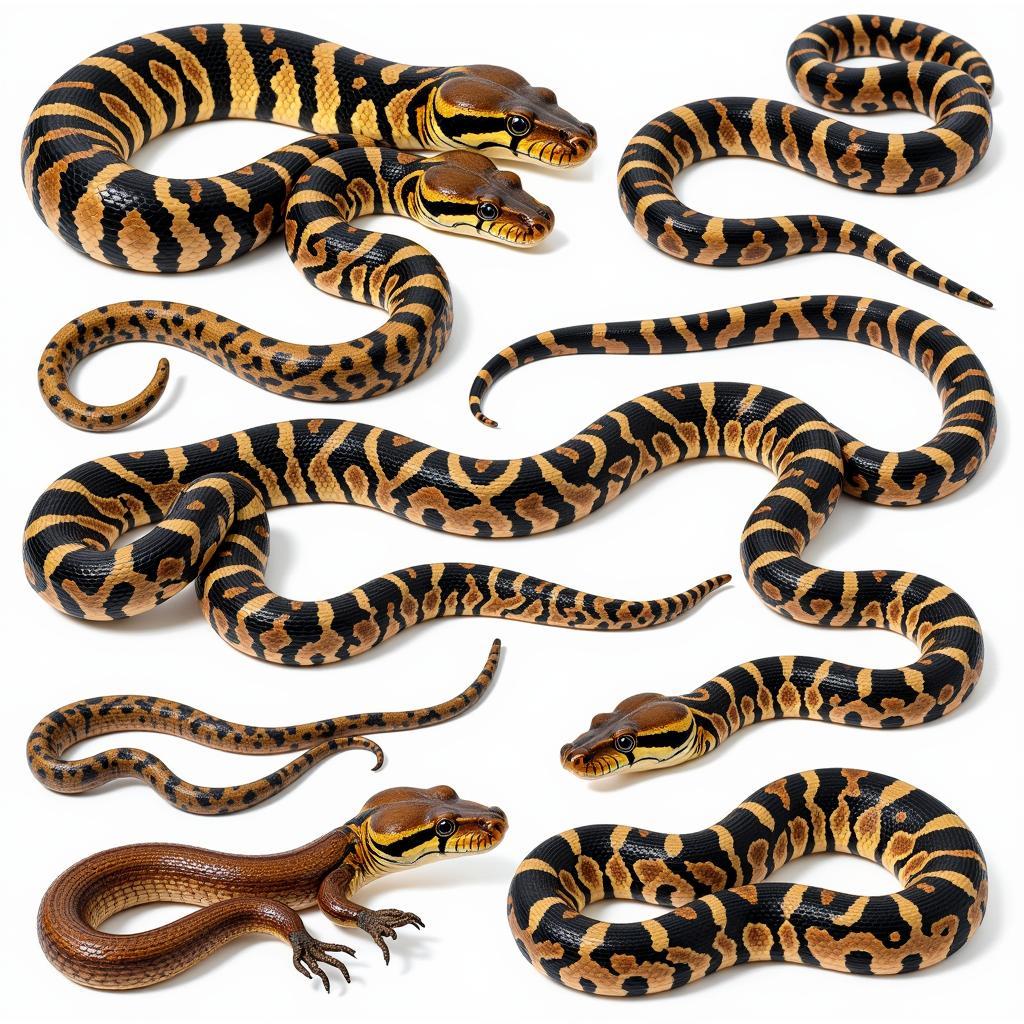Exploring the Mysteries of African Cave Animals
African Cave Animals represent a fascinating, often overlooked aspect of the continent’s rich biodiversity. These creatures, adapted to the unique challenges of subterranean life, offer a glimpse into the evolutionary pressures and survival strategies honed over millennia. From bats to insects, the dark depths of African caves harbor a surprising array of life, each with a unique story to tell.
The study of African cave animals offers valuable insights into the complex interplay between environment and evolution. These specialized organisms have adapted to the perpetual darkness, limited food resources, and stable temperatures of cave systems, developing unique physical and behavioral characteristics. Let’s delve into the intriguing world of these subterranean dwellers and uncover the secrets they hold. The African caveman also interacted with these creatures, leaving behind traces of their coexistence.
Adapting to the Darkness: The Unique Features of African Cave Animals
Cave environments present a distinct set of challenges, requiring specialized adaptations for survival. Many African cave animals exhibit reduced pigmentation, as color provides no advantage in the absence of light. Some species have even lost their eyes entirely, relying on enhanced senses of touch, smell, and hearing to navigate and locate prey.
One remarkable example is the blind cave fish, found in various African cave systems. These fish have lost their eyes and pigmentation, appearing almost translucent. They rely on their highly developed lateral line system to detect vibrations in the water, allowing them to navigate and find food in the dark.
The Diversity of African Cave Life: From Bats to Beetles
While bats are perhaps the most well-known cave dwellers, African caves are home to a surprising diversity of other animal life. Invertebrates, such as crickets, spiders, and beetles, play a crucial role in the cave ecosystem, forming the base of the food chain. Some of these invertebrates have evolved unique adaptations, such as elongated appendages and specialized sensory organs, to thrive in the dark.
Certain species of cave-dwelling crickets, for instance, have developed extremely long antennae, sometimes exceeding their body length, to help them navigate and find food in the absence of light. These elongated antennae are incredibly sensitive to touch and vibrations, allowing the crickets to detect prey and avoid obstacles in the pitch-black environment.
The Importance of Conservation: Protecting African Cave Ecosystems
African cave ecosystems are fragile and vulnerable to human disturbance. Pollution, habitat destruction, and the introduction of invasive species can have devastating impacts on these unique environments and the specialized creatures that inhabit them. Protecting these ecosystems is crucial for preserving biodiversity and understanding the complex processes of evolution. Understanding where African animals live is crucial for broader conservation efforts.
Dr. Khadija Mwangi, a leading expert in African cave biology, emphasizes the importance of conservation efforts: “Cave ecosystems are often overlooked, but they are incredibly important for biodiversity conservation. These unique environments harbor species found nowhere else on Earth, and their protection is vital for maintaining the ecological balance of the region.”
What animals live in African caves?
A variety of animals, including bats, insects, spiders, fish, and even some amphibians, can be found in African caves.
Why are African cave animals often blind?
Because light is absent in caves, vision is not a necessary sense. Over generations, many cave-dwelling species have lost their eyesight, relying on other senses like touch and smell.
How do cave animals find food?
Cave animals have adapted to the limited food resources by developing specialized senses. Some rely on echolocation, while others have enhanced senses of smell or touch to locate prey.
Are African cave ecosystems threatened?
Yes, African cave ecosystems are threatened by various factors, including pollution, habitat destruction, and the introduction of invasive species.
What can be done to protect African cave animals?
Conservation efforts, such as protecting cave entrances, limiting human disturbance, and raising awareness about the importance of these ecosystems, are crucial for protecting African cave animals.
Why study African cave animals?
Studying these animals provides valuable insights into adaptation, evolution, and the intricate relationships within ecosystems. The knowledge gained can inform broader conservation strategies across Africa. It also connects us to the African in prehistory.
What are some examples of unique adaptations in African cave animals?
Loss of pigmentation, reduced or absent eyes, elongated appendages for sensory perception, and slow metabolic rates are some of the unique adaptations seen in African cave animals.
In conclusion, African cave animals offer a captivating window into the power of adaptation and the hidden wonders of the continent’s subterranean world. These specialized creatures, from the blind cave fish to the long-antennaed crickets, highlight the incredible diversity of life that thrives in even the most challenging environments. Protecting these fragile ecosystems is essential for preserving biodiversity and ensuring that future generations can continue to marvel at the mysteries of African cave animals. The study of African carnivorous animals list can help contextualize the role of cave predators. One fascinating aspect of African culture related to animals is the African hyena mask.
When you need help, please contact Phone Number: +255768904061, Email: kaka.mag@gmail.com Or visit us at: Mbarali DC Mawindi, Kangaga, Tanzania. We have a 24/7 customer service team.




